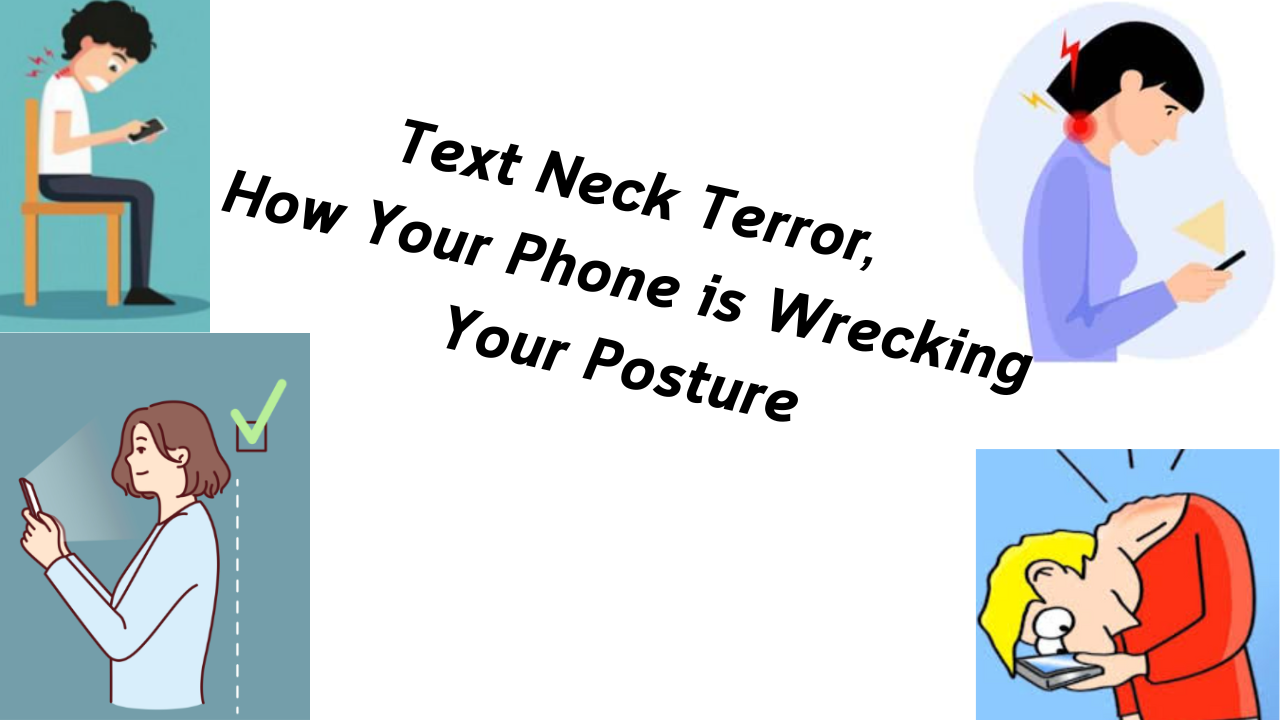We all know the feeling: glued to our phones, scrolling endlessly, necks craned downwards at an unnatural angle. This familiar pose, often dubbed “text neck,” is a growing concern in today’s tech-driven world. But what exactly is text neck, and how can we avoid its postural pitfalls?
The Downward Drag: How Tech Habits Hurt
Constantly hunching over smartphones and laptops puts immense strain on our necks and spines. Over time, this poor posture can lead to a cascade of problems, including:
- Neck pain and stiffness: The weight of your head (a surprisingly heavy 10-12 pounds!) increases significantly when your neck is bent forward. This constant strain can lead to chronic pain and tightness.
- Headaches: Muscle tension in the neck often triggers headaches, leaving you feeling foggy and uncomfortable.
- Rounded shoulders: As you hunch over your device, your shoulders naturally round forward. This not only looks bad, but can also restrict movement and cause discomfort.
- Upper back pain: Poor posture can lead to imbalances in your upper back muscles, resulting in pain and tightness.
Breaking the Text Neck Cycle: Tips for Tech-Savvy Posture
The good news: you can combat text neck and improve your posture! Here are some simple yet effective tips:
- Mind your posture: Be conscious of how you hold your phone or laptop. Aim for a neutral spine with your shoulders relaxed and your ears aligned with your shoulders.
- Elevate your devices: Instead of looking down, prop up your phone or laptop on a stand or use a riser. This brings the screen closer to eye level, reducing neck strain.
- Take frequent breaks: Every 20-30 minutes, look away from your screen and gently stretch your neck and shoulders.
- Strengthen your core: Strong core muscles support proper posture. Engage in exercises that target your abs and back muscles.
- Stretching is key: Regularly stretch your neck and shoulder muscles to improve flexibility and reduce tension.
Bonus Tip: Embrace the Ergonomic Advantage
Invest in ergonomic tools like a comfortable chair with good back support and a keyboard wrist rest. These can help maintain proper posture while using your devices.
Remember, good posture isn’t just about how you look, it’s about how you feel. By taking these steps to improve your posture, you can avoid pain, improve your overall well-being, and maybe even add an inch (or two!) to your height (thanks, better posture!).
So ditch the text neck and embrace a pain-free, tech-savvy you! Your body (and your chiropractor) will thank you for it.



